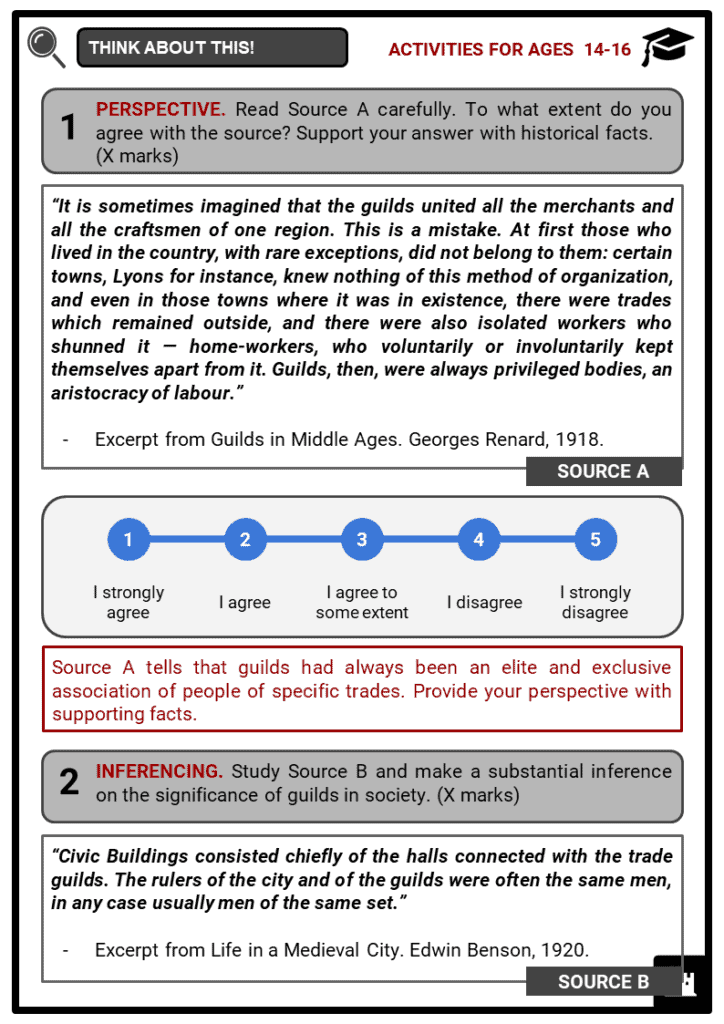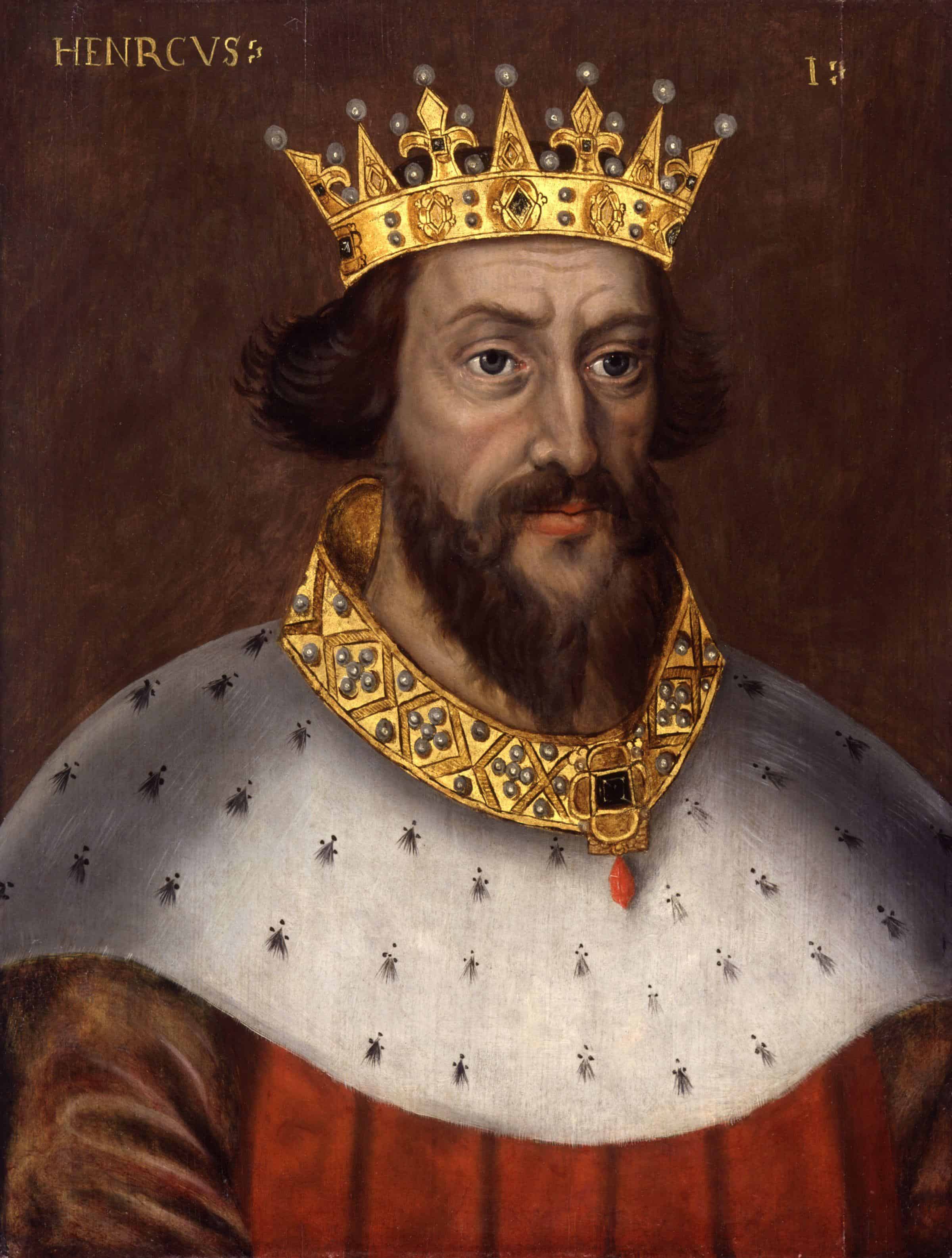Download Medieval Guild Worksheets
Do you want to save dozens of hours in time? Get your evenings and weekends back? Be able to teach Medieval Guild to your students?
Our worksheet bundle includes a fact file and printable worksheets and student activities. Perfect for both the classroom and homeschooling!
Table of Contents
Add a header to begin generating the table of contents
Summary
- Precedents in Roman times
- Rise of Guilds in Medieval Europe
- Types of Medieval Guilds
- Hierarchy of Medieval Guilds
- Functions of Medieval Guilds
- The Decline of Guilds
Key Facts And Information
Let’s know more about Medieval Guilds!
- Medieval guilds played an essential role in medieval societies. These associations of people provided good government and a stable economic base whilst ensuring the protection of the members and consumers. Merchant and craft guilds flourished in Europe between 11th and 16th centuries and gave rise to a new middle class. As societies transitioned to capitalism and technological innovations sprang up, guilds faced a slow decline with its weakening economic utility during the Renaissance and Reformation periods.
Precedents in Roman times
- Associations of people practising the same trade were recorded in the Roman era: they were called collegia.
- In the first century, they actively participated in the political life of the city, but later, they represented a rather effective instrument of local control for the imperial power.
- An example of these associations was the long-distance shippers based in La Ostia, the port of Rome.
- Under the emperor Diocletian, the membership of the guilds was restricted to a hereditary class of workers and artisans, guaranteeing social stability after the profound transformations brought about by the crisis of the third century.
- The Roman guilds failed to survive when the Western Roman Empire collapsed.
- The collegia continued in the Byzantine Empire, with an elaborate organisation for financial and tax-raising administration on every craft and trade in the city of Byzantium (Constantinople, now Turkey).
- Whilst the guilds of medieval Europe were thought to have derived from the Byzantine Empire’s collegia, no direct connections have been discovered.
- The origins of the medieval guilds were found in the shifting economies of western and northern Europe as they emerged from the Dark Ages.
Rise of guilds in Medieval Europe
- A guild is an association of craftsmen or merchants of a particular trade.
- It is one of the many terms used in the Middle Ages to describe associations that represented professional groups.
- Professional and trade associations arose and spread throughout Europe between 11th and 16th centuries with various names.
- The name ‘guild’ derives from the Saxon word gilden, meaning ‘to pay’ or 'yield’ as members of the guild were expected to share their collective finances.
- Guilds were essential in medieval towns as these associations ensured the protection of the workers by providing mutual aid, and protected consumers by maintaining quality standards of the goods.
- As guilds spread to England, Sweden, Italy, the Netherlands and Germany, they developed into merchant associations.
- They secured the monopoly and the commerce of the cities, controlling the various activities and selling all kinds of goods both wholesale and retail.
- Merchants who were not members of the guild could only sell their products in bulk and were subject to special restrictions.
- In essence, they were required to pay special taxes to the feudal lord or the city, whereas the guild paid annually for all its members, who were also exempt from other city taxes.
Types of Medieval Guilds
- Medieval guilds were classified into two main types: merchant and craft guilds.
Merchant Guilds
- Merchant guilds were comprised of all or most of the merchants in a town or city; they might be local or long-distance traders, wholesale or retail sellers, and might deal in various categories of goods.
- They controlled the trade of a particular item.
- Merchant guilds were first documented in England in the paper granted to the bourgeois of Burford (1087-1107) and in Flanders in the charter granted by Count Baldwin and Countess Richilde to the Guild of Valenciennes in 1167 and in another paper of the 12th century approving the statutes of the guild of Saint-Omer.
- Merchant guilds gave rise to a new powerful middle class, as they became political players in the city.
- It became almost impossible to build a political career if one was not a member of a guild.
Craft Guilds
- Craft guilds, on the other hand, were usually comprised of all the artisans and craftsmen in a particular branch of industry or commerce.
- Craft guilds such as weavers of Oxford, Huntington, London and fullers of Winchester appeared in England under the reign of Henry I between 1100 and 1133.
- They controlled the wages, quality, and conditions of sale of the product their members produced.
- Craft guilds eventually consisted of associations of cutlers (makers of cutlery), haberdashers (dealers in goods needed for sewing and weaving), dyers, bakers, saddlers, masons, specialists in metal goods such as blacksmiths, armourers, locksmiths and jewellers, and many others covering all aspects of daily life.
Hierarchy of Medieval guilds
- Medieval guilds, especially craft guilds, followed a hierarchy based on an apprenticeship system.
Apprentice
- Parents paid a master to train their child.
- The master took the child as an apprentice and provided him with education, food, clothing and housing.
- Apprentices received no compensation other than maintenance, and training usually took nine years.
Journeyman
- After the training, the apprentice became a journeyman and was allowed to work for other masters.
- A journeyman was given a document certifying his rank and received wages for his labour.
Master craftsman
- A journeyman would become a master craftsman after producing a masterpiece, donating money and other goods, and gaining approval from the masters of the guild.
- A master craftsman could sell within a town and open his own shop.
- Medieval guilds limited the participation of women: only widows and daughters of known masters were usually allowed in.
- Requirement to enter guilds became stricter over time as those who controlled the guilds became part of a richer middle class and set a higher membership fee for outsiders.
- This new bourgeoisie successfully maintained their position above workers without the means or skills needed to run their own small businesses.
- They may not have been fully accepted into high society but they clearly distanced themselves from everyone below them.
- Many guilds began restricting the acceptance of members: sons of existing guild members and those who were sponsored by a master were highly likely to be accepted.
- In effect, entry to the guild became almost entirely heritable and many guilds produced hereditary professions.
Functions of Medieval Guilds
- Guilds had other purposes other than economic and educational functions.
- With the guilds’ religious roots, they were often associated with a patron saint and would maintain a chapel in the parish church for its members.
- They were involved in charitable works for the members and the community at large.
- Members held their banquets and official business in maintained residences called guildhalls.
- Additionally, guilds not only helped the sick members, but also assisted them on every occasion.
- They honoured the memory of deceased members of the guild and assumed the responsibility of raising their children and sometimes even gave them a dowry.
- In some institutions, pensions were given to those who were unable to work, especially the elderly.
- Likewise, the religious guilds intended to ensure harmony and solidarity among their members: those who attempted to harm the reputation or interests of a guild member were fined.
The Decline of Guilds
- The medieval merchant and craft guilds provided good government and stable economic bases, and aided the economic organisation of the cities and towns in Europe.
- However, the guilds’ conservatism, exclusivity, monopolistic practices, and selective entrance policies eventually led to the weakening of their economic utility.
- During the 14th century, the guilds lost their importance following the decline of the municipalities, and those that survived turned into religious associations again.
- In the 15th century, the power of the guilds began to deteriorate even further.
- The main cause of the decline and subsequent disappearance of the guilds was the birth of a new and more dynamic mode of production and distribution: capitalism.
- Capitalism favoured the production of large-scale goods, the competition between producers on various markets, and a wide distribution of goods.
- Since the guilds were opposed to these three principles, the capitalists generally established their activities in centres where these did not exist.
- Unable to produce goods as quickly and economically as capitalist enterprises, even for their own local markets, guilds experienced a slow decline during the Renaissance and Reformation periods.
- Merchant guilds became less important as merchants preferred forming companies.
- Craft guilds were disrupted as technological innovations continued to advance and gave rise to new trade opportunities.
- They continued to flourish in China, India, Japan, and the Islamic world but the impact of modern Western industrial organisation proved hard to hold off.
Image sources:
[2.] https://upload.wikimedia.org/wikipedia/commons/8/83/Mendel_I_072_v.jpg
[3.] https://upload.wikimedia.org/wikipedia/commons/2/28/King_Henry_I_from_NPG.jpg









